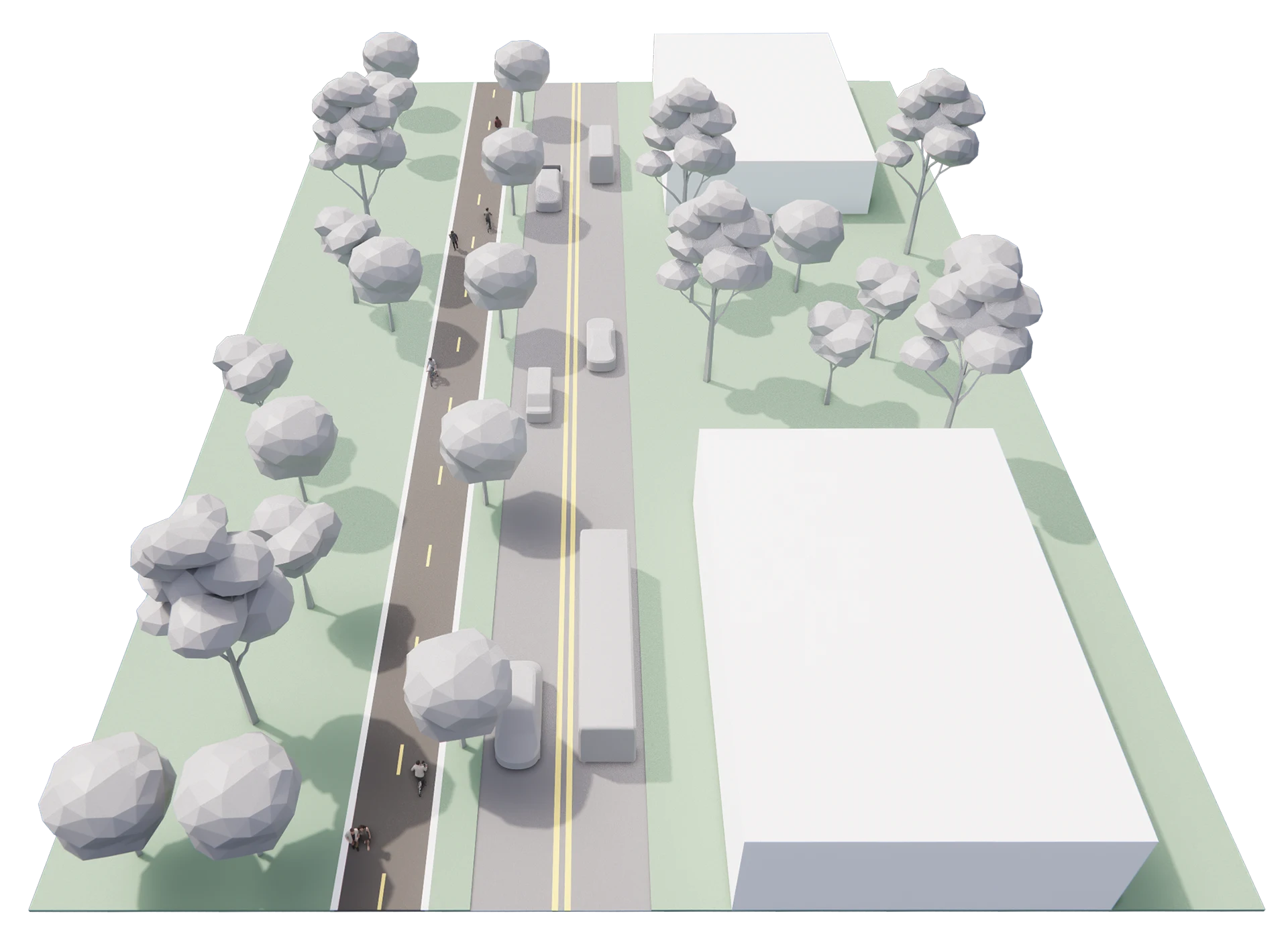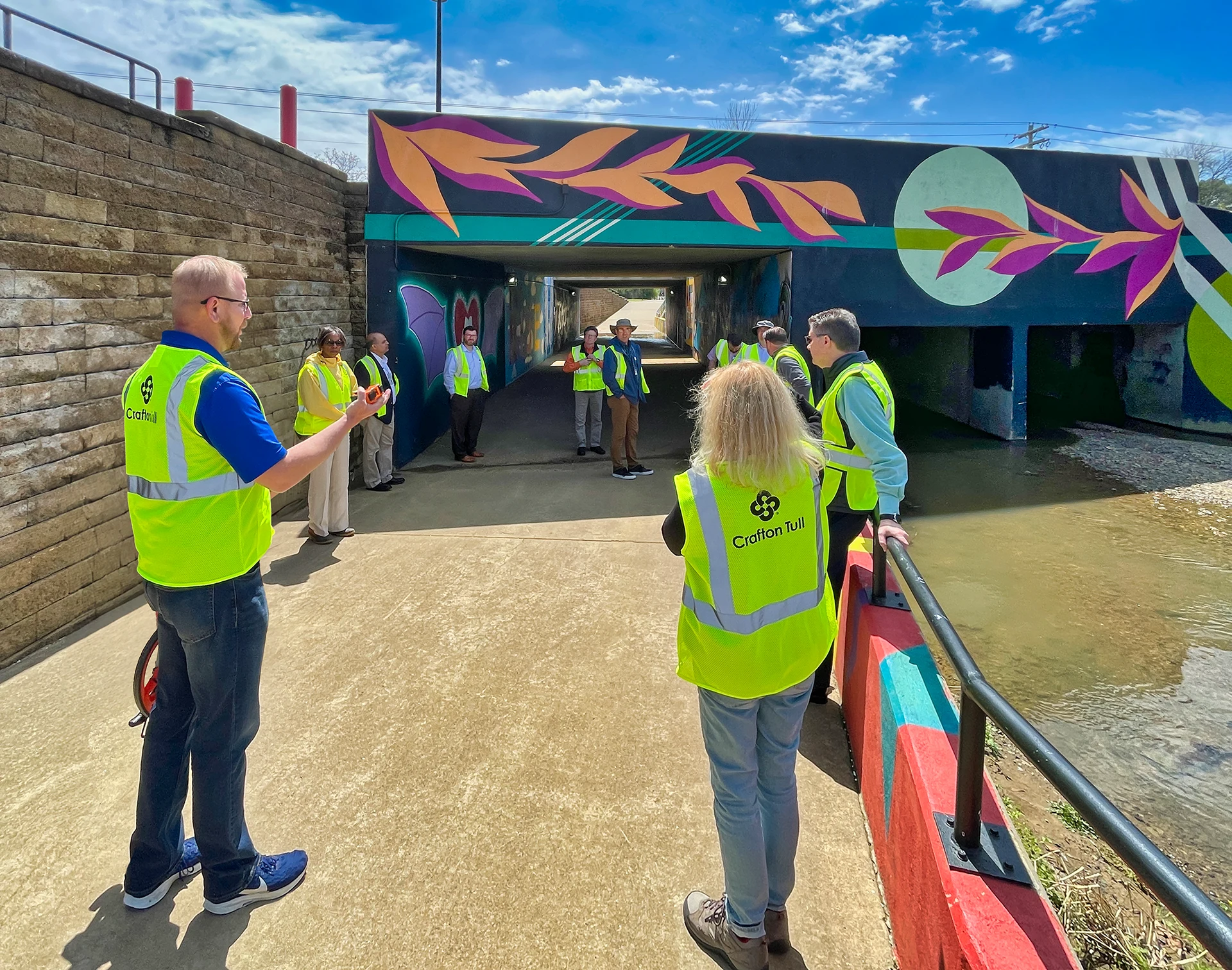
Isaac Sims, AICP, PCED
Planner III - PlanningSigned into law in 2021, the Bipartisan Infrastructure Law (BIL) allocated $550 million for transportation, resilience and broadband infrastructure, the largest such investment in the history of the United States. Similar infrastructure programs have provided funds in the past to states, counties, metropolitan planning organizations and municipalities to build and repair new roads, bridges and trail systems.
The priority for clean and equitable transportation modes, such as bicycling and walking, can be found in the title of this new grant program: Rebuilding American Infrastructure with Sustainability and Equity, or RAISE. In Arkansas, adding more trails makes sense when considering solutions to local transportation issues, primarily due to the reality that most cities are too small to support public transit (beyond on-demand systems). Only the largest metropolitan regions in the state, Central Arkansas and Northwest Arkansas, have the population threshold necessary to support public transit. When integrated into a regional transportation framework, trails become not only recreation options, but practical transportation modes, turning a car trip of less than a mile into a 5-minute bike ride or a 20-minute walk.
The U.S. DOT has awarded two Arkansas communities with RAISE grants for comprehensive trail networks (with two additional trail projects awarded to ArDOT and ADPHT). In 2022, Conway was awarded a $24.6 million RAISE grant to construct 15 miles of separated multi-use trails. Just one year later, Russellville won $23.4 million to construct a similar 13-mile network. Most recently, Searcy was awarded $4.2 million, the largest grant award in the City’s history, for the planning portion of a 21-mile trail network. All three communities competed against significantly larger metropolitan areas and cities across the country for multimillion-dollar transportation grants – and won.

The availability of RAISE funding can provide hope for small to mid-sized cities seeking to decrease stress on local roadways while providing transportation solutions for vulnerable populations. While Conway just recently launched a micro transit option for its citizens, Russellville has no public transit, leaving bicycling and walking as the remaining transportation options for those without access to a car. This includes individuals with disabilities who would otherwise participate in the workforce, children within walking distance of their school who could participate in walk-to-school programs or anyone desiring clean and affordable transportation options.
Crafton Tull has provided grant application support for Arkansas communities that has resulted in federal and state grant awards for trail projects. Federal grants require a high level of detail and copious amounts of technical data to support the demonstrated need for active transportation investment. The most important ingredient in a RAISE grant submission is a clear, accurate, and concise telling of your community’s story. Our experience has revealed three crucial steps for aspiring communities to take in preparing their application.
1. Engage Your Community

Public engagement is a critical piece of the RAISE Grant application process
Public engagement is an integral component of the RAISE process, taking the form of public meetings, stakeholder interviews or web-based surveys. Citizens need to show support and excitement for the plan, demonstrated through recorded input that can be reflected in the grant application. Some communities may choose to pursue RAISE funding following a successful bicycle and pedestrian planning process, and other cities may choose a similar approach of engaging the public during a plan update.
Cities lacking any history of public engagement surrounding bicycling and walking should not be discouraged: effective public engagement can be conducted in a time period as short as three months. Some communities may choose to hold stakeholder interviews to gather feedback from major employers, nonprofits, school superintendents and other community leaders regarding where they see their constituents bicycling and walking, and what routes they take.
2. Form a Team
Another common denominator among Arkansas’ successful RAISE applications is collaborative interdepartmental communication. In Russellville, the planning, streets, parks and recreation departments, as well as administrative and financial divisions of the City set regular weekly meetings to coordinate, share input and write sections of the grant together. Grant writers employed by a city will rely on the knowledge and expertise of these departments. Where expertise may be lacking at the city level, a firm like Crafton Tull can provide cost estimates, 3D renderings, and supplemental grant writing.
3. Be Persistent
Cities seeking RAISE funding for an active transportation network should be resilient in their endeavor. Success did not come immediately to the City of Conway, which worked over the course of several years to develop their application and hone their message after multiple unsuccessful submissions. Despite the administrative challenges of creating a quality grant submission, RAISE funds have the power to transform a community by providing funding for paved trails and laying the groundwork for enhanced quality of life and economic development opportunities.